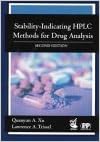Key Insights into FDA Stability Guidelines for Biopharmaceuticals
Introduction
Biopharmaceuticals, such as monoclonal antibodies, vaccines, and recombinant proteins, are among the most innovative yet sensitive pharmaceutical products. Stability testing for these products is critical for maintaining their quality, safety, and efficacy throughout their lifecycle. The U.S. Food and Drug Administration (FDA) has established comprehensive guidelines for the stability testing of biopharmaceuticals, ensuring they meet stringent regulatory standards. This article provides actionable insights into FDA stability guidelines and offers strategies for achieving compliance and success in this challenging domain.
Understanding FDA Stability Testing Guidelines
The FDA’s stability guidelines
- Ensuring Product Integrity: Verifying that biopharmaceuticals maintain their intended properties under recommended storage conditions.
- Establishing Shelf Life: Determining the expiration date based on long-term and accelerated studies.
- Supporting Regulatory Submissions: Providing robust stability data to satisfy FDA requirements for marketing approval.
Core Components of FDA Stability Guidelines
1. Long-Term Stability Testing
Long-term stability studies assess the product’s performance under typical storage conditions over its intended shelf life. For biopharmaceuticals, the following conditions typically apply:
- Temperature: 2°C to 8°C for refrigerated products; -20°C or lower for frozen products.
- Sampling Intervals: Testing at 0, 3, 6, 9, 12, and up to 24 months.
Tip: Include real-time data for accurate shelf-life predictions.
2. Accelerated Stability Testing
Accelerated studies simulate extreme conditions to predict long-term stability trends in a shorter timeframe:
- Temperature: 25°C ± 2°C for refrigerated products; higher temperatures for frozen products.
- Duration: Typically up to six months.
Tip: Use accelerated testing to establish provisional shelf life while long-term data is being collected.
3. Stress Testing
Stress testing identifies degradation pathways and establishes stability-indicating parameters. Conditions include:
- High temperature and humidity.
- Exposure to light (photostability testing).
- Freeze-thaw cycles for frozen products.
Example: Stress testing of monoclonal antibodies reveals their susceptibility to aggregation under thermal stress.
4. Freeze-Thaw Studies
Many biopharmaceuticals require cold-chain storage and are subject to freeze-thaw cycles during transportation. These studies assess:
- Key Parameters: Potency, structural integrity, and physical appearance.
- Cycle Testing: Simulating multiple freeze-thaw events to ensure stability.
Tip: Conduct these studies early to guide storage and distribution strategies.
Critical Quality Attributes (CQAs) in Stability Testing
The FDA emphasizes the evaluation of CQAs to ensure biopharmaceuticals remain safe and effective. Key CQAs include:
- Potency: Biological activity of the product over time.
- Structural Integrity: Monitoring aggregation, denaturation, and fragmentation.
- Purity: Assessing degradation products and impurities.
- Microbial Stability: Verifying sterility and preservative efficacy.
Tip: Use advanced analytical techniques such as mass spectrometry and high-performance liquid chromatography (HPLC) for accurate monitoring.
Challenges in Stability Testing for Biopharmaceuticals
1. Analytical Complexity
Biopharmaceuticals require sophisticated analytical methods to monitor CQAs accurately:
- Specialized equipment and expertise are needed for reliable results.
- Ensuring consistency across multiple batches can be challenging.
Solution: Invest in validated, stability-indicating methods to enhance accuracy and reproducibility.
2. Short Shelf Life
Some biologics, such as cell and gene therapies, have limited shelf life, making long-term stability studies impractical:
- Real-time stability monitoring becomes essential for such products.
- Accelerated studies may provide insufficient data due to rapid degradation.
Solution: Focus on robust storage and distribution protocols to extend viability.
3. Cold Chain Dependence
Maintaining ultra-low temperatures for biopharmaceuticals is resource-intensive:
- Storage and transportation at -70°C for products like mRNA vaccines can increase costs.
- Freeze-thaw exposure during logistics poses additional challenges.
Solution: Leverage specialized cold chain infrastructure and real-time temperature monitoring systems.
Strategies for Compliance with FDA Guidelines
To navigate FDA stability requirements effectively, adopt the following strategies:
- Plan Early: Incorporate stability testing into the initial phases of product development.
- Engage Regulators: Maintain open communication with the FDA to address specific requirements and concerns.
- Validate Methods: Use validated analytical methods tailored to the biopharmaceutical’s unique properties.
- Leverage Technology: Implement automated data management systems to ensure accuracy and compliance.
- Invest in Training: Equip teams with the skills needed to manage advanced stability testing processes.
Emerging Trends in Stability Testing for Biopharmaceuticals
The field of stability testing for biopharmaceuticals is evolving with new technologies and approaches:
- AI and Predictive Modeling: Forecasting stability trends using machine learning algorithms.
- Digital Transformation: Cloud-based platforms improve data management and regulatory reporting.
- Sustainability: Energy-efficient stability chambers and eco-friendly packaging materials are becoming industry standards.
Future Outlook: FDA guidelines are expected to incorporate these innovations, streamlining stability testing further.
Conclusion
FDA stability guidelines for biopharmaceuticals provide a robust framework for ensuring the safety, efficacy, and quality of these highly sensitive products. By adhering to these guidelines, leveraging advanced technologies, and adopting best practices, manufacturers can navigate the complexities of stability testing and achieve regulatory compliance. As the industry continues to evolve, staying ahead of emerging trends and innovations will be critical to success in the competitive biopharmaceutical landscape.
